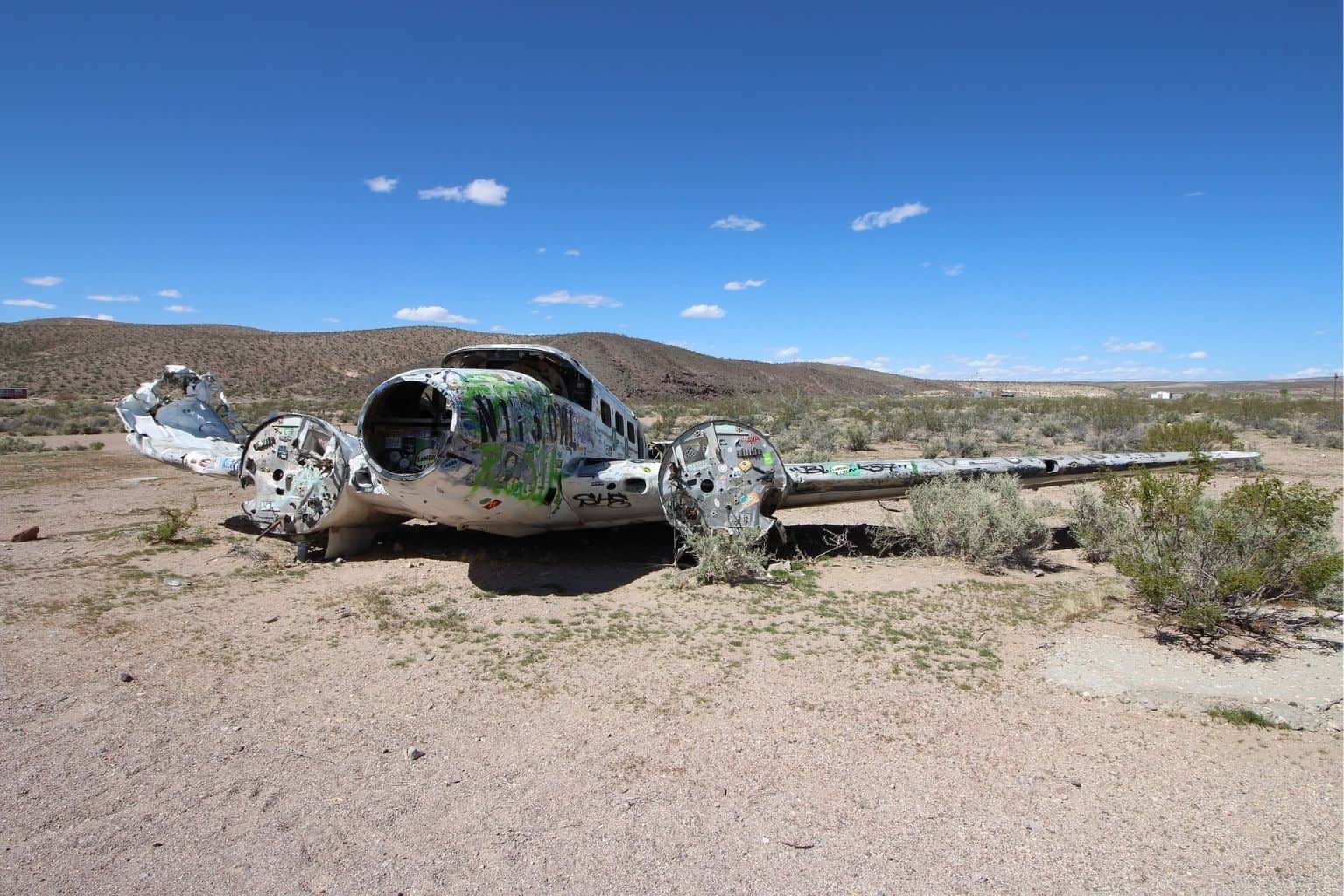As we know, there are many folks out there who are scared of flying. Most of the time, they picture the worst possible things that can happen, which includes a plane crash and having to survive on open water or a deserted island.
While it is true that statistically, cars crash more often than planes, it doesn’t mean that it can’t happen. Too often, the automatic reaction of people who are facing impending plane crash is to panic. It’s a normal human reaction when faced with critical situations…
However, when your life is at stake, you will have to fight through it. A great many people have a significant fear of flying, at least the people who will admit to it!
Whether you are one of these nervous flyers or not, you should know that the best antidote to fear is understanding, since one of the basic causes of fear is a lack of understanding about what you are dealing with.
The statistics, tips and procedures below are gleaned from the National Transportation Safety Board’s Bureau of Transportation statistics, particularly a study conducted during the first half of the second decade of the 2000s, 2012 to 2016.
Airplane Crash Fast Facts
The NTSB’s Bureau of Transportation statistics really, really loves their stats and it shows! I’ll avoid bombarding you with the full an unabridged data from the study, but the following should shed some light on what you are dealing with. When they sifted the data about the American fliers, they found:
- About 20% of Americans self identify as nervous Flyers.
- A little over 10% self identify as being positively afraid to fly.
- Men are less afraid of flying than women.
- Among that 30% of Americans who are anxious about taking to the skies:
- Six-in-ten we’re worried about flying during bad weather
- Nearly 75% were afraid of mechanical problems while airborne.
- A little more than 1/3 were afraid to fly at night.
That’s a not-insignificant fraction of all American citizens who are a little shy about taking off into the wild blue. Is their anxiety justified? The Bureau of Transportation statistics also discovered the following:
- On any average day in America nearly 3 million people take to the skies in more than 35,000 commercial flights.
- Among these flights conducted by major airline carriers, An average person only has a one in 20 million chance of being involved in a crash that results in a fatality. Someone else’s fatality; not necessarily their own!
- An average passenger has a more than one in 3 billion chance of actually dying on any given flight during a plane crash.
- The overall survival rate of all crashes is about 95%.
- Among serious crashes, described as the aircraft suffering major structural damage and the occurrence of fire, the survival rate is 75%.
- During the course of the study, there were 140 aircraft accidents tallied; of those 140 accidents only two involved in any fatalities of passengers or crew at all.
It should be obvious to even a layman that flying is incredibly safe according to the statistics, and so long as you aren’t taking a rattletrap Pakistani puddle-jumper for a cutthroat rate you should not have anything to worry about.
Even if the plane should crash or experience an accident, your chances of dying are extremely low. How low?
Let’s compare the yearly deaths from flying on a major airline against other types of transit. These figures are taken from a 2017 study and subsequent analysis:
- There were 0 deaths attributed to any commercial airline flight.
- Over 37,000 deaths occurred on America’s highways (all ground vehicles).
- Over 750 deaths where are attributed to train travel.
- Over 694 deaths were attributed to boats or other waterborne vehicles.
So there you have it. I trust it is obvious to you now that flying is one of the very safest forms of travel by any type of vehicle in the United States and pretty much in all the world.
The chances that you will be involved in any kind of aircraft related accident are astronomically low, and the chance that you will be involved in one serious enough to result in fatalities are hilariously remote. Nonetheless, it pays to be prepared and that is what this website and indeed this article are all about.
Also there is one more statistic that the NTSB cooked up that should give you pause for thought: Out of all the fatalities that occur as a result of aircraft crashes, about 40% of those deaths take place in crashes that are considered survivable by passengers and crew.
That means something goes wrong or someone screws up in the aftermath and that is the situation that leads directly to their death, not death resulting from any immediate trauma as an effect of the crash.
So we know that while the chances of being involved in an aircraft accident are extremely small, they are not impossible, and should they occur it is your actions that take place after the crash that might be the most important.
And the subsequent sections we will give you procedures, tips and advice for surviving the crash itself as well as the chaotic and dangerous aftermath.
How to Prepare
Being prepared for the event of a plane crash is half the battle of surviving one. Knowing what to do and with your awareness, you can make fast work of following the safety guidelines, exit the airplane and help others if they need it. Here are a few tips that can help you prepare…
The Back of the Plane Isn’t Necessarily the Safest
You have almost certainly heard are the standard advice for surviving a plane crash: sit at the back! The idea that has long been popularized is that my sitting at the back of the plane you will have a much larger, impact-absorbing “crumple zone” ahead of you in the form of the plane’s fuselage and other structural components.
Who wants to be sitting at the very front in first class since they will be the first to get squashed, right?
Well, while it does make a certain amount of sense to the uninitiated this is what I call a “great wrong answer”: it seems logical, but it doesn’t make sense when you consider the totality of the circumstances involved in any given plane crash.
Chiefly, planes do not always smack the ground in the same orientation that they normally fly in, meaning nose first. A plane could hit the ground sideways, wing first. It could hit the ground backwards, believe it or not! There is no way to say for sure what the orientation of the plane will be during a crash.
For this reason, seating arrangements are sort of a roll of the dice as far as survivability on impact goes.
But there is one thing you can do that will statistically increase your chances of survival no matter what kind of crash you were involved in: Sit within five rows of the plane’s primary emergency exits.
It has been discovered time and time again through exhaustive analysis of plane crash survivors that most of them lived because they had an easy time getting off of the plane, meaning they did not have to fight through a debris-strewn interior or try to hustle past a herd of panicking people.
The closer you are to the exit the better your chances of surviving a plane crash, period. Getting off the plane fast after a crash is super important because…
You Must Get Off Quick after the Crash
As it turns out, a major cause of fatalities after the plane has crashed is the resultant fire that will almost inevitably spread through the wreckage (if it is intact).
This fire naturally will be fatal for any uninjured or wounded survivors who are trapped or otherwise stuck within when it occurs. This is a high-stakes situation: it will take less than 2 minutes on average for fire to completely engulf a plane after a crash.
Obviously time is of the essence, and lends some insight into the recommended seating arrangement above.
You can imagine how difficult this will be if you are trapped all the way forward or all the way to the rear and a crashed plane, wounded, dazed and with the cabin rapidly filling with smoke trying to claw your way past debris and other panicky people who are in the way.
The clock is ticking and the fire rises. You must prepare to get out of the plane as quickly as possible and also set yourself up for success to do so.
Stick with Large Planes
This is a simple recommendation they can absolutely increase your chances of surviving a crash. The reason why is easy for everyone to understand: large airplanes will absorb more impact during any kind of collision and that means less potentially fatal energy that is reaching the squishy passengers within.
Across all domains and all evaluations, smaller planes do far worse in crashes than larger planes. Part of the high fatality rate common to private aircraft crashes are due to the fact that the majority of them are small in nature compared to a national airline’s typical aircraft.
Beware Normalcy Bias
Understand that in any accident involving an aircraft, especially one that does not seem particularly violent or serious, you might have to overcome your own built-in normalcy bias in order to save your life.
What is normalcy bias? Normalcy bias is your brain’s programming that suggests everything will be okay because things have always been okay. Things like this don’t typically happen, and that means that what has happened is not that bad. Sound circular and self-defeating? That’s because it is.
This is not just an admonishment to not be dumb after a plane crash; studies and analysis have shown that too many people mill around in the plane after a crash instead of getting out.
They think that because the plane has come to rest despite the bumpy landing that the danger has passed, when there’s almost certainly a fire brewing or other dangerous conditions that exist to necessitate getting off the aircraft at best speed.
After a crash, no matter what, start affecting self-rescue!
Dress Reasonably
Mobility is an important aspect of surviving a plane crash, which is why you should dress comfortably, but sensibly. You never know when you might need to make some moves during a survival situation.
While airport fashion is something of a trend these days, you have to take into consideration that you might have to fight for your survival during the trip.
Wear flat shoes and the most comfortable clothes you have.
Be Alert During Takeoff and Landing
There is a maxim can the aviation industry that is known as the rule of “Plus Three Minus Eight”. This “consonant salad” serves to remind you of what the most dangerous periods of any given flight are.
It refers to the first 3 minutes after a plane has left the ground and the last eight minutes before it touches down at its destination. Statistically, this is when the overwhelming majority of all crashes occur; three minutes after takeoff and eight minutes before landing, hence the name.
What this means to you is it you should be most vigilant during these times. Statistically, you are essentially home free in between these phases.
And while you don’t have much to worry about when flying at any rate, if you want to be truly safe you should be ready for action immediately after liftoff and before you get ready to land.
What does that mean? Practically, just be more alert, review the plane’s safety briefing and your own action plan during this time, don’t sleep through it (not that the flight attendants will let you do so anyway) and make sure you have your shoes on.
It is a strange thing, but it seems like lots of people like to take their shoes off when they’re flying. Also, and it should not need mentioning, make sure you keep your seatbelt fastened!
One last thing: as fun as it is, try not to be completely sloshed on your alcohol of choice when flying. You will need all your wits about you, and excellent coordination and reflexes if you hope to survive the aftermath of a crash.
Thinking through a plane crash can cause paranoia, but don’t give in to it; you need only to be vigilant. This is the point where you should remember that flying is incredibly safe!
Some circumstances can’t be helped but should they occur your preparation can save your life as well as your loved ones.
Steps to Surviving a Plane Crash
If you find yourself with any critical situation like a house fire or dealing with a house invasion, the first thing that you need to remember is to reign in your panic.
Experiencing a plane crash is no different. Because we don’t think it’s going to happen, we’re usually unprepared for it. However, here’s a quick fix to that problem: a step-by-step process of how to survive a plane crash.
Step 1: Stay Calm, Focus
Often, the crash is predicted and announced by the captain. Once you hear the announcement, take a few seconds to breathe in and out.
Realize that there are people on the plane with you who knows what needs to be done to make sure that you survive. Help out the flight attendants by keeping yourself calm and making sure that you listen carefully.
Step 2: Fasten Your Seatbelt
Make sure that it’s secure and tight enough to hold you in place. Now is not the time to worry about how your belly or any other body part will look or if your seatbelt will hold; they are designed to take 3,000 pounds of force.
If you are wise, you will keep your seatbelt buckled the entirety of the time that you are in your seat.
Sure, they might be modestly uncomfortable, but even if you aren’t dealing with a full-blown crash sudden onset severe turbulence can result in you being launched out of your seat and striking the ceiling of the cabin or someone else. Your seatbelt will prevent it!
Step 3: Secure Your Oxygen Mask (If it Deploys)
The moment that the oxygen mask drops, put it on yourself first before helping others put on theirs. This is a commonly debated issue regarding safety but remember that the reasoning behind this is that you’re no good to anyone if you’re oxygen deprived.
If the plane is still operating at high altitude when the oxygen masks drop, there is a reason for that, and any loss of pressure or oxygenation in the cabin at those altitudes can incapacitate you in a matter of seconds.
This is why you always have the flight crew reminding everyone to secure their own mask at once and do so before they help anyone else, including children.
Step 4: Put on Your Life Jacket, Prepare for Impact
In case the anticipated result is crashing into water, put on your life jacket but do NOT inflate it. This regulation is backed by the fact that the crash to water might result in filling the cabin before you can get out of it.
With an inflated life jacket beforehand, you could get pushed to the top and have no way to get out which will result to drowning.
As soon as you’ve secured your seatbelt, oxygen mask and life jacket, clean up and organize where you are to give you more space.
For your bags, it’s recommended that you put them under your seat to prevent your legs from snapping back. Make sure that there’s nothing on you that can delay you from exiting like untied shoelaces and flying jackets.
Step 5: Assume Brace Position
Go into the bracing position. This varies depending on your distance from the chair in front of you. If the chair is within reach, you can clutch the headrest and put your head in the space between your arms.
If it’s not close enough, you’ll have to lean your head on your legs and cover it with your arms. Usually, the safety guideline in front of you will show how to do it.
Here are a few tips to help you determine if you’re in a good bracing position…
First, your torso should be as low as possible to help cushion the jackknife effect of the impact.
Your head should be protected by your arms. If you can touch your head to your knees, that would be the best position. Another tip that can help you through the impact is to put a pillow (if you have one) over your head.
Protect your legs. This is a very crucial part of your body aside from your head. Your fast exit is what you will be relying on after the crash.
Plant your feet firmly on the ground and if you have some overhead baggage, it would do you good to put it under your seat to protect your legs from snapping to the back. You can also put baggage in front of your legs to keep them in check or to act as a cushion.
Instruct your kids or your elderly companions to do the same as what you are doing. Although your first instinct is to help them, make sure that you have ample protection for yourself first. You’re no good to them if you’re injured.
What About Your Survival Kit?
After surviving a plane crash and making ready to escape, it is generally a good idea to abandon any luggage you might have brought with you.
Taking the time to locate it and grab it, and then having to maneuver it through what is already cramped and chaotic quarters is only going to slow you down and create a bottleneck behind you. Don’t waste time looking for it or trying to access it.
But this does create an issue for preppers, since most of us who are traveling will carry our survival kit and other implements in our carry-on bag, with only a few on our person.
This is further complicated by the fact that many EDC items we take for granted are not allowed on aircraft or even past the security checkpoint. What is a prepper to do when flying in case you roll snake-eyes on that one in a million shot of a plane crashing with you aboard?
The way I see it you have two options. The first is to distribute all of your survival items on your body in pockets or pouches on your belt. This is much easier to do without looking like a weirdo if your items are compact and discrete in nature.
A flashlight, a survival strobe, emergency blanket, compact medical kit and other gear can be carried in pockets, strapped to your ankle in specially designed carriers and located elsewhere with minimal or zero increase in profile.
An alternate method is to keep your survival stash as compact as possible in a small, detached pouch placed in your carry-on. Then make it a point to keep your carry-on bag handy at or under your seat.
If you have time and opportunity to access it before the plane crashes, say after an announcement from the captain or crew that the plane is going down, you can reach into your carry-on and grab your much smaller survival kit.
With that done, abandon your carry-on, pocket or sling it and get ready to hold on!
What to Do After the Crash
After you’ve managed to survive the impact, the next thing to do is to exit the plane as fast you can. Here’s a few tips on what to do right after impact:
Remember your loved ones. Because the human instinct dictates self-preservation, panic can set in and drive you to take yourself to survival. While it might sound harsh, this is still a very possible scenario. Look out of the people you love and get them out.
Listen to the flight attendant’s instructions right after the crash. Always remember that they have training for these kinds of situations.
Be as calm as possible and help them contain a panicking crowd if you can. Avoid a stampede or a riot. Cooperate and assist as much as you can.
Do not attempt to salvage any of your valuables. Forget them and move to the exit as directed by the flight attendants or as instructed by the safety guidelines. Do not attempt to get bags from the overhead bin. You need to have free hands because stability is very crucial.
With only 90 second to get out of a destroyed plane, you have no time to stumble and fall, especially with the all the people fighting to get to the exit with you.
Be wary of smoke. If oxygen deprivation threat didn’t harm, the smoke surely will. If you detect or even smell it, drop down and crawl toward the exit.
Use a cloth to cover your nose and mouth as you breathe in and out the entire way. If it’s possible for you to wet the cloth with something, that would be ideal in warding off the smoke.
Before you use the designated exit, assess the situation outside. Is there anything that can hurt you like burning debris or sharp parts that could potentially do more harm than good? Do not rush out until and unless you are sure that it’s safe for you to go through that exit.
If you crashed on land, once you get out, run at least 500 meters or feet upwind from the plane. The next thing you need to worry about after surviving the impact is a fire or explosion. A considerable distance away from the plane will protect you from being blasted off or being impaled by flying debris.
If you crash on water, keep your calm. Planes are usually equipped with a life jacket or a life raft. Either way, if you followed the safety procedures, you should be safe in the water to float for a few hours.
If your plane is equipped with a life raft, then you are safer as it is required with emergency supplies like a first aid kit.
After everything has relatively settled, stay in one place and assess the situation you’re currently in. Put pressure on bleeding wounds and make a temporary brace for broken bones.
The next part of surviving a plane crash at this point is to live to tell the tale. Keep warm. Find whatever clothing is available to protect yourself from hypothermia.
Patiently wait for rescue to come. The scary part is it might take days but keep yourself from worrying about it. A plane is a big thing to go missing and a lot of people are going to go out and look for it. Keep your calm and only think about surviving days at worst.
A plane crash is s unexpected and you have no idea what can cause it because of the many factors involved in it. It’s a hard thing to prepare for, but knowing what to do is your best shot at surviving such a critical situation.
One of the most important things to remember is to ensure your safety before anybody else’s. Although you might want to put that gas mask on your child or elder first, remember that you need to ensure your own safety so that you can protect them until help arrives.
Wrap-Up
Your chances of being involved in any plane crash to say nothing of one with fatal consequences is astronomically low, even if you fly every day for the rest of your life.
That being said, plane crashes do indeed occur from time to time and are survivable so long as you make it through the initial impact and act quickly and correctly to get out of the plane. Use this article as your guide to be prepared in case the plane you are riding in goes down!


Like what you read?
Then you’re gonna love my free PDF, 20 common survival items, 20 uncommon survival uses for each. That’s 400 total uses for these dirt-cheap little items!
We will not spam you.

















